Find here all the thematic exhibitions presented at the 44th International Exhibition of Caricature, Press Cartoon and Humor in Saint-Just-le-Martel from September 27 to October 5, 2025.
Expositions 2025
- Home
- Exhibitions 2025
Spotlight on…

António
50 years of press cartoon (1974 – 2024)
✎ Espace Loup
This exhibitions presents a selection of cartoons from the book “Antonio, 50 anos de humores – 1974-2024 » published in 2024.
António (António Moreira Antunes) was born in Vila Franca de Xira, Lisbon, Portugal, on April 12, 1953. He has a course in Painting from the specialised Artistic School Antonio Arroio, Lisbon. Started cartooning in March 1974 in the newspaper Republica and has been a resident cartoonist for the weekly newspaper Expresso since late 1974. He is the author of the set “Lisbon Figures”, of 50 caricatures of relevant personalities of the city’s political, cultural and artistic life, made in recessed stone, that plastically animate the Aeroporto Station of the Metropolitano de Lisboa. He is curator of the Cartoon Xira Festival and director of the World Press Cartoon Salon.

Phil
50 years of smiling
✎ Espace Loup
Who is Phil? Answering that question would be like locking him up in a cage forever, and cages, Phil, they aren’t really his thing. He smashes cages. Locking people up, Phil, it isn’t really his thing. So sometimes we have to think about freedom: his freedom, other people’s freedom, our freedom, and the freedom of the press. Because the press, Phil, that is really his thing. The real press, the one that informs, that investigates, that researches, that never gives up, despite everything, despite censorship, propriety, and political correctness.
What do Phil Umbdenstock’s drawings tell us? Raw news? News blackened with red ink? His news? Because Phil is said to be a protester, committed, militant, red… with anger, with pain, with color! His pencil is said to be acidic, acerbic, sharp. His pencil is said to be full of disillusionment, sometimes. Whatever. His pencil is him, it’s his hand, it’s his life. I know him red, I know him black, I know him with and without his leather jacket. I know him angry, I know him happy, I know him sad. I know him militant, I know him committed. Never disillusioned. Never. A guy who runs cartooning workshops in prisons is not disillusioned, no. A guy who stubbornly continues to draw cartoons at a time when “Non mais allô quoi” and other Nabila references are registered with the INPI is not disillusioned, no.
Who is Phil Umbdenstock then? Always himself, yet never quite the same. Not because it suits us, no. Not because current events demand it. Because being the same every day is like dying. Because being recognized at first glance is like being just like everyone else. And looking like everyone else, Phil, isn’t really his thing. Because no one is really alike, in reality. Especially not him. Phil, an unexpected encounter. Love. Humor. Dark, sometimes. Dark, often. Because dark is beautiful. Because dark mixed with beauty is pure poetry.
– Alexandra Vallat

Loup and his many talents
✎ Espace Loup
Loup was a formidable predator who took pleasure in tearing apart with his teeth and sharp pencils anyone he didn’t like, such as politicians of all stripes, military personnel of all ranks, idiots of all kinds, and other species that were eminently harmful to planet Earth. On the other hand, I never saw him spit his venom at a working-class person, unionist or not, too red or not red enough, he who delighted in ferociously attacking both the good old capitalist in a top hat and the young hyper-neoliberal in expensive jeans and sneakers. An accomplice of Cabu and Siné on Michel Polac’s program “Droit de réponse” on TF1 (especially before the channel was privatized by the supposedly socialist president François Mitterrand for the benefit of the house builder Francis Bouygues), Loup was an integral part of this infernal quartet that made for some of the rare great moments in French television. (…)
A political cartoonist, humorist, and comic book artist, Loup was a scathing critic in the French press, notably in the pages of Charlie Mensuel, Le Canard Enchaîné, Pilote, Fluide Glacial, l’Idiot International, l’Evénement du Jeudi, Marianne, Siné Hebdo, and many other publications. Out of anti-militarist vanity, he also drew on a fighter jet seat, which allowed him to eject immediately once his graphic bombardment of human stupidity was complete. He was an aesthete. (…)
– Carlos Brito
Favorites
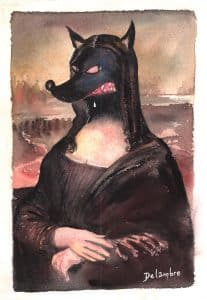
Delambre
C’est l’heure du pastiche, tableaux détournés
✎ Gymnase
This exhibition is an appetizer, a preview of an album in preparation in which the author reinterprets the paintings of the great masters and famous movie posters and advertisements. Many of the drawings have been published in the press, mainly in Le Canard Enchaîné…
Jean-Michel Delambre was born in Liévin in the Hauts-de-France region. He is a press cartoonist (Le Canard enchaîné for 40 years and other media) and comic book author (Le Da Vinci corse- au Cherche-Midi…), as well as a painter and sculptor. Author of children’s books (published by Miette-Arthémuse-Henry-la Rumeur libre), he publishes short stories and poems (La Der des der, L’Eldorado de la Méduse, winner of the Prix des Trouvères, published by Henry-la Rumeur libre).

Marilena Nardi
Vachement obstinée
✎ Espace Loup
Today, faced with the crisis in the press, the risk of lawsuits and personal attacks, the devaluation of graphic design, and the advent of AI, drawing is an act of resistance, or at least of great obstinacy. Hence the title of this exhibition, which presents drawings of various types: caricatures (including those of characters from the past), humorous drawings (on themes that are very dear to me), and drawings on current events.
Why this collection? Because it represents my career: I am a cartoonist, illustrator, and professor at the Academy of Fine Arts in Venice. I have always sought (and sometimes even found!) the balance necessary to allow these multiple “souls” within me to coexist. Drawing itself is a form of communication that uses multiple and different registers. In press illustration, a field to which I have been particularly devoted for 15 years, two worlds meet: that of art and that of journalism. Allow me to use a metaphor. The press cartoonist is a bit like a tightrope walker: he or she moves along a tightrope stretched between journalism, with its need for information and truthfulness of content, and art, which opens up different and deeper paths of understanding for the reader. In my drawings, like a tightrope walker, sometimes I am a little closer to current events (with politics and caricatures), other times I lean more towards expressive and poetic drawing. Humor acts as a counterbalance… which in my case does not necessarily mean seeking out the “comical” and laughter.
My drawings aim above all to make readers think, to ask questions, to raise doubts. And certainly, drawing helps me explore several directions, in a very stubborn and contrary way.
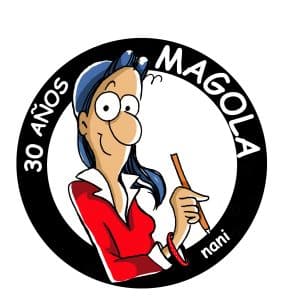
Nani
30 years of Magola
✎ Espace Loup
Adriana Mosquera Soto, alias Nani, born in Bogota, Colombia, is a Spanish-Colombian cartoonist and author.
In 1995, she created Magola, a funny feminist character who became one of the iconic figures of Ibero-American comics. Social humor, couples, current events, equality, and violence against women are all themes explored through her adventures. Environmental issues are also very present in her work. Magola is also published in the Spanish newspaper 20 minutos and the Colombian newspaper El Espectador.
NANI is the author of numerous books, including Así es Magola in 1996, Sobreviviendo en pareja (“Surviving as a Couple”) in 2005, Hasta que la realidad nos separe (“Until Reality Separates Us”) in 2008, Magola 1, Wonderful Woman, and Magola 2, No Comments in 2014. She has worked with numerous Spanish-American newspapers, including the daily newspapers El Tiempo, El Espectador, El Heraldo, La Opinión de Colombia, METRO, La Razón, El País, and Diario de Alcalá in Spain, and El Comercio in Ecuador.
She has held several exhibitions, notably in Cuba, China, Colombia, Spain, Portugal, and Mexico. She has also worked with NGOs on gender equality issues in Spain and Colombia. She has won numerous awards, including Honorary Professor of Humor from the University of Alcalá de Henares in Spain in 1997, first place in the Humor and Breastfeeding Competition in Spain in 2003, first mention in the International Graphic Humor Competition in Gondomar, Portugal, in 2006, first place in the Meeting of Female Cartoonists competition in Cuba in 2006, and the Diogeneses Taborda Grand Prize in Argentina in 2012.
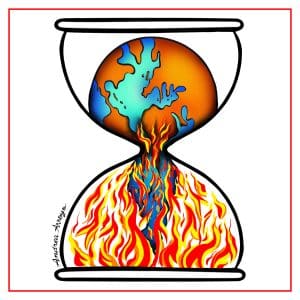
Andrea Arroyo
ImagiNATIONS: Art as Solidarity
✎ Espace Loup
“ImagiNATIONS: Art as Solidarity” is an ongoing series of artworks created in response to issues that affect us every day, such as immigration, human rights, displacement, armed violence, international conflicts, and the environmental crisis. These works reflect universal values of love, justice, equality, and peace. They aim to build bridges across borders, languages, and cultures, while sparking dialogue on current issues, both locally and globally.
This project celebrates the spirit of peaceful political opposition, as well as joy and beauty as forms of creative resistance. Witnessing injustice and political upheaval inspires me to create images that not only document the turbulent times we live in, but also celebrate the beauty and resilience of the most vulnerable communities.
For me, creating art is a practice of hope in action. I hope these images will inspire reflection and empower individuals and communities to take action by speaking out with empathy, solidarity, and love. The project takes many forms: printed pages, online, galleries, museums, public art exhibitions, and the book ImagiNATIONS: Art as Solidarity.
The selections from “Solidarity” have been recognized with various awards, including first prize in the United Nations Lurie International Prize; the Political Satire Award at the Biennial of Humor in Cuba; the Northern Manhattan Arts Alliance Award, the Puffin Foundation Award, the Upper Manhattan Empowerment Zone Award, and the Lower Manhattan Cultural Council Award.

Feggo
Feggorama
✎ Gymnase
“I enjoy creating visual commentary on everyday situations and global issues, using the universal language of art and humor. I’ve been doing this for forty-five years and hope to continue until the end of time!” – Feggo
Felipe Galindo Gómez (Feggo) creates humorous works in various media, including comics, illustration, animation, fine art, and public art. He is also an art teacher. Born in Cuernavaca, Mexico, Feggo has lived in New York since 1983. He holds a bachelor’s degree in visual arts from the National Autonomous University of Mexico.
Feggo has organized numerous solo exhibitions in the United States and abroad. He has been recognized for his cartoons in the United States, the United Nations, Ukraine, Turkey, Greece, Portugal, Mexico, Japan, Italy, Puerto Rico, Croatia, and Belgium. His comic books include Cats Will Be Cats (Plume/Penguin), Manhattan and No Man Is a Desert Island (J. Pinto Books), George Washington: Back to New York City, Taking Liberties, an interpretation of the Statue of Liberty, Used/Reused, Trump Truth, and Trump Law, co-written with Henry R. Kaufman (Now What Media).
He also wrote the recently published graphic novel Ellis Island (First Second Books). He designed Magic Realism in Kingsbridge, a series of humorous images on four permanent public artworks in faceted glass for the platforms of the 231st Street subway station in New York City, commissioned by MTA Arts Design.
Nod to…

Mustafa Moharram Bey Mokhtar
✎ Gymnase
Mustafa Moharram Bey MOKHTAR was born on December 15, 1883. After studying law at the French Law School in Cairo, he joined the Royal Palace service, where he was in charge of royal protocol specific to King Fouad I. He left this position to become an advisor to the mixed courts. Moustapha Moharram loved to travel, and Paris, where he spent his summer vacations with his family every year, became his favorite city.
In addition to drawing caricatures, Moustapha was fluent in seven languages, played the violin, sculpted, and engraved. From an early age, he had a fondness for art and thus followed the students of the École des Beaux-Arts with fascination. At the same time, he began to practice caricature drawing and to depict the scenes that captivated him. With his keen eye, he captured scenes from life and the features of people, which he “recorded” with brio. On the judges’ bench, his sketchbook was always with him, and he would “sketch” the faces of judges, lawyers, and court visitors.
Moustapha Moharram Moukhtar participated in numerous exhibitions, including the first dedicated to caricature in Egypt in 1917. He frequently participated in exhibitions organized annually by the Cairo Society of Fine Arts, notably in 1923 and 1929. Encouraged by his friends to compile his works in a book, he published a book entitled “Caricatures” in French in Paris at his own expense. This book is still considered today to be the oldest book of caricatures published in Egypt in modern times. In 1936, he published the second part of the book, which this time was printed in Cairo.
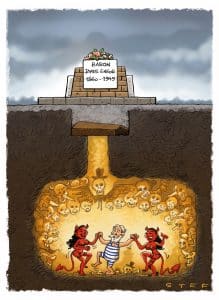
European Cartoon Center
Belgian art in caricatures, from Flemish masters to cartoons
✎ Gymnase
Welcome to this cartoon journey through the history of Belgian art.
Despite its small size, Belgium has made an extraordinary contribution to the history of European art. Belgian art is not uniform but extremely diverse. It is as mysterious as a Magritte painting, as refined as Hergé’s Ligne Claire, as popular as Bruegel, as playful as The Smurfs, and as melancholic as a Toots Thielemans melody.
Whether on canvas, in text, with music, or in cartoon form, Belgian art is characterized by its craftsmanship, imagination, absurdity, and a touch of irony. Each of these elements serves as a source of inspiration for today’s Belgian cartoonists. “Belgium: where the ordinary becomes strange, and the strange becomes familiar.” For this exhibition, “From the Flemish Primitives to Comics: The History of Belgian Art in Cartoons,” we asked Belgian cartoonists to send us cartoons that refer to our own Belgian art history. From more than 100 Belgian cartoonists, an international jury selected 50 cartoons for the traveling exhibition. With this exhibition, we want to present a sample of Belgian cartoons to the general public and cartoon enthusiasts, while at the same time sparking curiosity about Belgian art history. Of course, Van Eyck, Magritte, and Tintin will ring a bell. But do art lovers around the world know the work of Félicien Rops, Panamarenko, and Wim Delvoye?
This exhibition is organized by the European Cartoon Center Kruishoutem – Belgium, and the following cartoonists and press illustrators have contributed to the exhibition: Philippe Bossens, Marc De Bel, Leon De Borger, Luc Descheemaeker, Hans Dierick, Raphaël Donay, Patrick Heymans, Tony Houbrechts, Jean-Claude Salemi, Stijn Lauwers, Marc Ghijsels, Jan Op de Beeck, Stefaan Provijn, Constantin Sunnerberg, Tony Tasco, Wouter Van Ghysegem, Norbert Van Yperzeele, Trui Vanden Berghe, Eric Vandenberghe, Bert Vanstiphout, Francois Veldeman, Luc Vernimmen, and Geert Verscheure Stefaan Veys
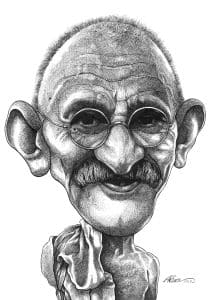
Egypt Cartoon
Gandhi
✎ Espace Loup
Mohandas Karamchand Gandhi, born in Porbandar (Gujarat) on October 2, 1869, and assassinated in New Delhi on January 30, 1948, was an Indian lawyer, nationalist, anti-colonialist, and political figure known for his use of nonviolent resistance.
He led political campaigns for India’s independence from British rule.
A pioneer and theorist of satyāgraha, resistance to oppression through mass civil disobedience, this theory is based on ahiṃsā (“non-violence”), which helped lead India to independence. Gandhi inspired many liberation and civil rights movements around the world. His critical analysis of Western modernity, forms of authority, and oppression (including the state) challenged the development that influenced many theorists and political leaders.
Gandhi is recognized as the Father of the Nation in India, where his birthday is a national holiday. This date was also declared “International Day of Nonviolence” by the United Nations General Assembly in 2007.
Tributes
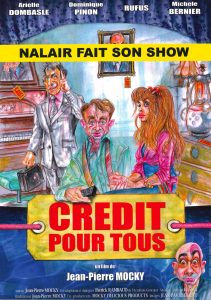
Nalair
✎ Espace Loup
It was while organizing two cultural classes in St Just le Martel (1990–1991) that Nalair encountered the world of journalism and cartooning. It was love at first sight! He began collaborating with L’Enseignant (national and local) as well as other newspapers, fanzines, and magazines. He participated in numerous exhibitions as a caricaturist. How can we explain this pronounced taste for live work? For him, it is an extraordinary way to communicate face to face… All this without ever ceasing to carry out artistic research of all kinds: paintings, collages, drawings, etc.
Nalair was president of Feco-France for five years and editor-in-chief of Fecorico, a newspaper he created in January 2012. Nalair has won several awards, including the Public Prize in Orléans, the City Prize, also in Orléans, the City of Louviers Prize, and an international prize that is dear to his heart, the Award of Excellence at the 10th International Editorial Cartoon Contest of the Canadian Committee for Freedom of the Press in Toronto.
Historical exhibitions
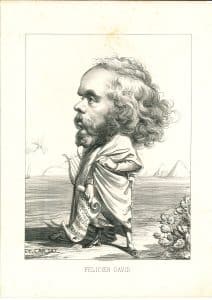
Jacky Houdré
Grosses têtes et petits corps
✎ Gymnase
The caricature portrait featuring a character with a large head on a small body became a staple of caricature at the end of the 19th century. The first caricaturists to use this technique were Benjamin Roubaud, Honoré Daumier, Nadar, and Etienne Carjat. The exhibition aims to showcase the work of the first artists to use this technique.
Young audience
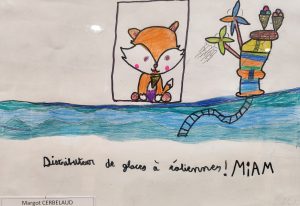
Collège Donzelot (Limoges), École Aristide Briand (Le Palais-sur-Vienne), École Fernand Buisson (Feytiat), École du Roussillon (Limoges), École de La Bastide (Limoges) et E.D.F.
Au gré du vent
✎ Gymnase
After “Hot Stuff! Draw for Tomorrow!” and “Water in All Its Forms,” this year’s theme for school audiences was wind. This partnership project between the Salon, EDF, and the French Ministry of Education was launched in 2022. Five Cycle 2 and Cycle 3 classes discovered current events through press cartoons and an introduction to drawing techniques to express their emotions and ideas.
“Au gré du vent” was structured around several sessions for schools in Roussillon (Limoges), La Bastide (Limoges), Fernand Buisson (Feytiat), Aristide Briand (Le-Palais-sur-Vienne), and Donzelot Middle School (Limoges) throughout the 2024-2025 school year. The year began with a visit to the 2024 Salon, where all the participants met, visited exhibitions, and talked with the cartoonists.
Starting in January, visual artist Lydia ROCHE-TURFFAUT visited each class once a month. The alternation between the illustrator’s techniques and perspectives and sessions on current events and the theme of wind taught by the teachers led to the completion of various works in the classes, which will be exhibited at the 2025 Salon. Finally, in June, the classes were treated to a special day at Lake Saint-Pardoux, where they were introduced to boomerangs and learned how to draw on cardboard boomerangs.
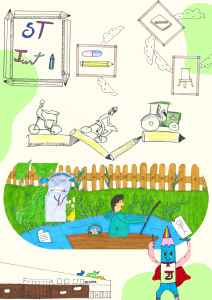
L’école des Justins
Presentation of drawings from a year of classes
✎ Gymnase
This year, at the Justins School, we were able to: experiment with various styles of caricature (working on light and shadow, creating collaborative caricatures), analyze current events through the week’s press cartoons, and try out different ways of adding a touch of humor to a drawing.
We had fun creating optical illusions, drawing caricatures of celebrities, making unexpected combinations of drawings, drawing on an interactive whiteboard, creating a poster representing the town of St Just, and producing our first newspaper together.
We were able to create amusing drawings with surprising shadows, recount the difficult daily life of a crocodile, visit the Siné exhibition and draw inspiration from it for funny cats, draw fruits and vegetables doing sports, practice drawing characters and postures, draw on different media, and above all, learn to look at the world with new eyes!
The Justins 2024/2025 illustrators: Mathilde, Lucile, Lucas, Manon, Emma, Margaux, Charlie, and Maya.
Here is a small sample of the Justins school!
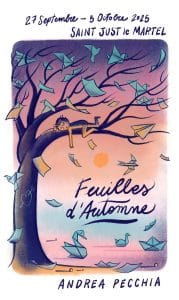
Pecchia
Autumn leaves
✎ Gymnase
Autumn is the season of falling leaves, their oscillating trajectories forming emotional parabolas. Autumn is also the season of warm, energizing colors: red, brown, yellow, and orange. School has just started again, as has football season, and we find ourselves facing a blank page, ready to be filled with a new chapter in our lives. A page that can take on gray, dark, obscured, or colorful hues depending on how we approach events. And that is where the poetic meaning of everyday life lies, which, like a falling leaf, oscillates between “routine” and “poetry.” It always depends on your point of view.
Andrea Pecchia and his exhibition offer undeniably original, poetic, and cross-cutting perspectives, capable of transforming a leaf into a page on which to write the photosynthesis of one’s existence and vice versa. A bivalent game that evolves in different ways: one-way, multi-way, even two-way. It all depends on the starting point, the visualization, and the point of view of the image on which to focus. In French, “leaf” and “paper” are synonyms.
In Andrea Pecchia’s exhibition, leaves and autumn leaves also take on a double meaning. By assonance, like Honoré de Balzac’s Feuilleton, which, in the middle of the front page of French newspapers nearly three centuries ago, invented the serialized novel. A space for culture. The term “Feuilleton” now refers to the literary genre itself, offering stories rich in events, characters, and twists and turns, aimed at emotionally engaging a wide audience, where situations are highlighted by bright colors and sharp contrasts.
Pecchia’s exhibition shares, more than just the assonance of the term “feuille” (leaf), the spirit of Balzac, who argued that “There is a whole life in an hour of love,” just as there is so much love in an hour of life at the La Feuille d’automne exhibition in Saint Just le Martel.
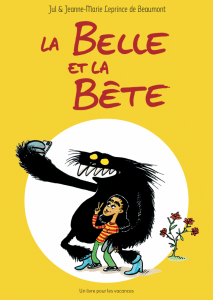
Jul
Beauty and the Beast
✎ Gymnase
Even without realizing it, every day we take the path that leads us to others. When you open this book, you will encounter a remarkable young woman who was able to see beyond appearances. Her name was Belle. Her empathy and generosity were not limited by the Beast’s appearance. Behind his dark eyes, she saw a glimmer of humanity. Behind his sharp fangs, she sensed a tender smile. And above all, in the Beast’s words, she heard the fragile poetry in which love sometimes takes root.
In life, as in this tale, relationships often require the courage to open up to the unknown, to reach out to what seems foreign to us. For it is in this encounter that understanding, richness, and the strength of human bonds are born.
Written by a great woman of letters, Jeanne-Marie Leprince de Beaumont, this timeless tale invites us to look beyond appearances. Reading Beauty and the Beast is like engaging in dialogue with the past as well as with others, and learning to better understand what unites us.
And because a fairy tale can also be told through images, this book offers a visual journey enhanced by Jul’s talent. His interpretation is part of the long tradition of reinterpretations of Beauty and the Beast, from cinema to comic books to songs. In this version, drawn especially for you, you will discover Jul’s mischievous touch and sharp eye, which breathe new life into this tale.
Now it’s up to you to dive into this story filled with books, music, beauty, differences, and unexpected similarities, where Belle reminds us that true beauty comes from the heart, and the Beast shows us that kindness reveals what appearances hide.

Alf
Laicity, my love
✎ Gymnase
Secularism is disputed, fought over, and manipulated according to the whims of politics and the media. It is brandished like a banner or used as a threat, accompanied by trumpets that often sound false or violins that wail outrageously. But it is rarely used to serve its purpose.
I have always been convinced that it is a liberating force and still relevant today, which inevitably makes it suspect or dangerous in the eyes of those who seek only domination, enslavement, or rejection.
Referring to the upheavals that are shaking our world and sometimes straying from the strict field of secularism to address related issues, the drawings on display seek to denounce the many attacks on dignity, freedom, and the fundamental principles of human rights.
Showing the opposites is a way of invoking the values that are at the heart of secularism: respect, tolerance, fraternity, and freedom of expression.
It is a simple message that I wanted to convey as a point of support for teachers, who are the “gardeners of intelligence.” I hope that it will speak to the youngest among us in particular.
International
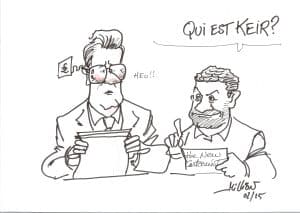
Steve Bell, Dave Brown, Mark Chamber, Nicolas Jennings, Pete Songi
Who is Keir ?
✎ Gymnase
On July 5, 2024, the British returned power to the Labour Party, led by a new prime minister named Keir. But who is Keir?
We will attempt to answer this question through more than 150 cartoons by some 30 cartoonists from around the world: many British, of course, but also French, Maltese, Australian, New Zealand, Nigerian, and South African artists. All these artists recount Keir’s adventures since he entered the political arena, allowing us to get to know this somewhat enigmatic man better.
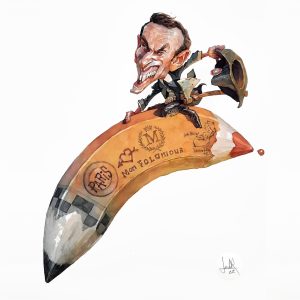
La Galerie Citric
Citric. Graphic humor and caricatures in Barcelona
✎ Gymnase
CÍTRIC is an exhibition of graphic works that invites visitors to form an opinion on social and individual reality, with a critical perspective.
Graphic humor and caricature are considered a minor discipline, little cultivated and rarely represented in museums, ignoring the fact that criticism of others in plastic art has been a constant among the masters of painting since the 19th century and, especially, among the avant-garde artists of the 20th century. In fact, many cartoonists present Picasso and Cubism as the great incursion of caricature into the world of art.
The exhibition CITRIC. Caricature and Graphic Humor in Barcelona aims to give space to a critical view that avoids a simple interpretation of reality. First impressions are not always what matters.
Ten international artists living in Barcelona, with different styles but a common goal: to force us to interpret all the hidden dimensions in a drawing designed to make us think. An opportunity to acquire original works that are not part of the exhibition circuit or have been created exclusively for the exhibition. Discover the work of Kim (Joaquim Aubert, Kap (Jaume Capdevila), Ant (Anthony Garner), Pedro Espinosa, David Pugliese, Jésica Cichero, Elisa Speranza, Leonardo Rodríguez, Lluïsot et Sandersen (Sandra de León), offered by Quei15ARTGallery.
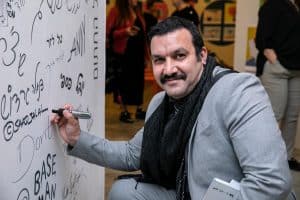
Saad Jalal
Traits of Freedom: Moroccan Women’s Rights in Caricatures
✎ Espace Loup
Beneath drawings that appear to be humorous caricatures lies a harsh reality. Upon closer inspection, it quickly becomes clear that these drawings are a powerful and raw denunciation of the gender inequalities that women face on a daily basis in Morocco. Domestic violence, rape, sexual harassment… shining a light on these injustices, pointing them out to draw attention and bring about behavioral change.
The pencil of this great Moroccan cartoonist has been actively involved in the fight against violence against women for years. In partnership with UN Women, the young Moroccan cartoonist aims to lift the veil on these inequalities in order to better combat them. In a society where women do not enjoy all their rights and are not equal to men, Saad Jalal is ready to change mindsets and finally say goodbye to certain backward ideas that have no place in today’s Moroccan society.

Liza Donnelly et Ann Telnaes
Chronicle of a Feminine America
✎ Espace Loup
What is freedom in the land of freedom? It is the emblem of this exhibition, represented by the statue that welcomed immigrants to Ellis Island and by the spirit that animates our two guest cartoonists. Where is freedom headed? It’s an essential question these days. Ann Telnaes shows it leaving with her little suitcase the day after Donald Trump’s election in a cartoon chosen for one of the posters.
The conditions of women, human rights, education, equality, and the reception of migrants are all subjects that inspire the civic pen of Ann Telnaes and Liza Donnelly. These issues, already hotly debated in different states (most recently on abortion), have been exacerbated with the arrival of Donald Trump, the supreme representative of masculinity and disrespect. “She is the one who draws Donald Trump best,” says Chappatte of Ann Telnaes, whom he knows very well.
The cause of women occupies most of the exhibition, focusing on their freedoms and rights being curtailed. Between (in)equality of opportunity, age, and abortion, their drawings, as subtle in style as they are in message, denounce the Republican Party and its freedom-destroying measures. Alongside these are a series of explicit works on mass killings, censorship, climate change, and freedom of the press. Two videos are available showing Liza Donnelly’s live drawing work and the Pulitzer Prize for Editorial Cartooning awarded to Ann Telnaes in 2001.
Enter (without a visa) their territory and follow these chronicles through an America whose flame of freedom is dying out and which press cartoons relentlessly revive.
Collective exhibitions

Ajil, Alf, Ballouhey, Bonnet, Buondelmonte, Byache, Daullé, Defacque, Delambre, Melliet, Placide, Salma, Savignac, Tym
Van Gogh’s Madmen
✎ Gymnase
Vincent Van Gogh, an evangelist sent to preach to miners in the Borinage region of Belgium, found his artistic calling after a long walk to Courrières, where the painter Jules Breton lived. Two hundred kilometers there and back! It was March 1880, and it was raining.
On his return, the rebellious Vincent—whom his pastor father wanted to place in an asylum—was a changed man. As he confided to his brother, he was determined to throw himself body and soul into painting: “I saw Courrières, I regained my energy, everything changed for me.” What a little-known story!
In Maboules de Van Gogh (ateliergalerieéditions), Bruno Vouters recounts the birth of this vocation but also explores Van Gogh’s love life. This remarkable Vincent turned his head and led him to astonishing discoveries, so he invited fifteen talented illustrators to join him in creating an offbeat, unrestrained, mischievous, and playful album…

Jean-Claude Souyri et Bernard Veyri
Toulouse Lautrec and contemporary cartoonists
✎ Gymnase
Why the exhibition “H de Toulouse-Lautrec, as seen by contemporary cartoonists”?
Born in Aveyron in 1944, I have been collecting old and modern postcards, old photographs, and books illustrated by press cartoonists from 1900 to the present day since 1975. With the International Club of Contemporary Postcards (CICPC), which I founded, I have organized dozens of exhibitions of press cartoons and caricatures in Albi, at the Toulouse-Lautrec Museum, in banks, at the Cultural Center, and in other venues.
For decades, I have attended trade shows where, in my guest book, I have been treated to beautiful caricatures of myself… But, being from Albi, the birthplace of H. de Toulouse-Lautrec, I decided to have him draw me when I attended trade shows, which is more interesting and very varied.
So, having many caricatures by H. de T.L., I proposed an exhibition to the team at Saint-Just-le-Martel, whom I warmly thank. Thanks also to all the artists who kindly caricatured H de T.L.
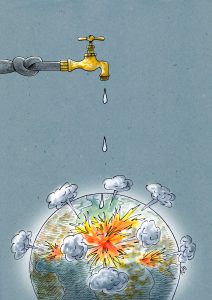
France Cartoons
Cartoons on the bridge
✎ Gymnase
This exhibition, organized by France Cartoons, was presented in Pont-en-Royans, located on the border between Isère and Drôme, at the foot of the Vercors mountains, in 2024–2025. one of the most beautiful villages in the Dauphiné region, famous for its colorful houses suspended in midair. There is water everywhere: two rivers, waterfalls, and a bridge. The mayor, Yves Pillet, who recently passed away, created the Water Museum there, dedicated to water in all its forms. It is an ideal place to exhibit satirical drawings on this urgent theme.
Drawings by 30 artists from around the world are presented on the theme of water, drought, floods, pollution, oil spills, the lack of this precious resource, and overfishing. See drawings by: Alf, Ballouhey, Barrigue, Batti, Biz, Boligan, Bridenne, Cagle, Daullé, Decressac, Delambre, Englehart, Giemsi, Jak, Lerouge, Marco de Angelis, Million, Nardi, Phil, Pichon, Pitter, Placide, Rousso, Samson, Sanaga, Sondron, Tignous, Trax, Vomorin, and Ysope.
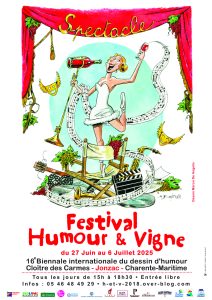
Humour et Vigne 2025
A retrospective of 30 years of festival
✎ Gymnase
This exhibition traces the history of the Biennale since its creation in 1994, featuring all the posters, a collection of old drawings, caricatures, photos, videos, and in the display cases all the merchandise, books, original documents, trophies, etc.
For over 30 years, we have been sharing our passion for humor, tolerance, and freedom of expression by bringing together the talents of remarkable artists and participating in around 200 events in a hundred locations in France and abroad.
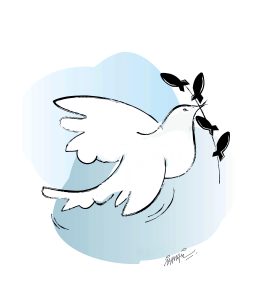
Librexpression
War and Peace
✎ Espace Loup
The veterans of World War I believed it would be the last, but their children fought in the next one. “Never again,” the survivors would say, a wish that became the mantra of pacifists during the countless wars, more than a hundred, that followed. They were not global, but they engulfed every region of the world, confirming the emptiness of the slogan “never again.”
We Europeans, even if no one dares to say it clearly, have been at war since Russia invaded Ukraine. A hybrid war, but a war nonetheless. The new slogan that Putin and Trump are trying to impose, without being contradicted by China, is: “peace through strength, and may the strongest prevail.” The corollary: to hell with the UN, diplomacy, the Nuclear Non-Proliferation Treaty (1970) and the Treaty on the Peaceful Use of Outer Space (1967).
Twelve press cartoonists, members of the Librexpreession Scientific Council, explore with irony our militarized past, present, and future, as well as the dreams of peace without weapons that remain despite everything. Pax Vobiscum! Featuring: Pierre Ballouhey, Niels Bo Bojesen, Marco De Angelis, Ismail Dogan, Kap, Kianoush, Fabio Magnasciutti, Marilena Nardi, Ramses, Tjeerd Royaards, Fadi Toon, Uber
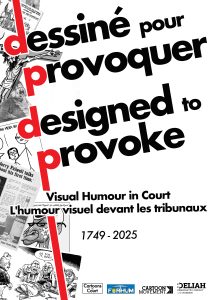
Network of European Institutes for Advanced Study
Cartoons in court: Drawn to provoke – visual humor in the courts (1749 – 2025)
✎ Espace Loup
Since at least the early days of political caricature in the mid-eighteenth century, visual humor has played a vital role in public debate. Its importance has been recognized in several influential cases from very different contexts. According to the words of the Supreme Court of the United States:
“Despite their sometimes caustic nature, from the earliest caricatures depicting George Washington as a donkey to the present day, graphic representations and satirical drawings have played a prominent role in public and political debate. […] From the perspective of history, it is clear that our political discourse would have been considerably poorer without them.” (Hustler v. Falwell, 1988, pars 53-55)
Similar statements can be found in landmark decisions about humor in general around the world. Yet, despite these supposedly robust legal defences of visual humor, the prospects for cartoonists and satirists today are not always as bright as these initial quotes might suggest. Press cartoonists in general are typically among the first victims of repressions by authoritarian governments all over the world. […]
Learning to respond to ideas we find offensive through dialogue (as opposed to censorship or violence) is essential for democracy, and should play a key role in civic education. We hoped that this exhibition, with its curated selection of satirical works from around the world, can contribute to fostering such a dialogue.
Partner exhibitions

Mozzafari Firoozeh
Carpet red
From September 10 to October 4, 2025
Maison des Francophonies
Iranian artist, Firoozeh Mozaffari first studied graphic design in Tehran. At 30, she sends her first drawings to the press and is immediately published in different newspapers such as Shargh, Eternad, Farhikhtegan and on the site Khabar-online. In 2012, she was one of four Iranian cartoonists to receive the Kofi Annan Freedom of Expression Award. Committed, she joined the illustrator collective rice s Cartooning for Peace and is convinced that art awakens consciences. Spreading knowledge is the first step of change that happens faster in a democratic and free world than in authoritarian countries.
She draws on all subjects, with, she admits, some precautions. But the red lines she denounces here are above all those imposed by society on women. From an early age, pressures and prohibitions restrict the horizon of young girls when for boys the path of possibilities is wide open. Olympism, arts and cinema, education… the obstacle slips in everywhere. With a powerful stroke and strong graphics, without text, the work of Firoozeh, anchored in Iranian daily life, achieves a universalism that allows everyone to be directly touched. A series of about twenty drawings linked by the color red which often evokes the forbidden, sometimes prestige and hope, but more than anything and always, struggle.
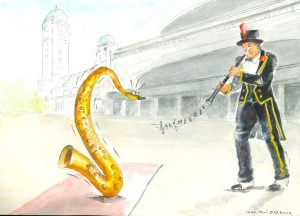
Lauréats du Concours Amateurs 2024-2025 & Collège Jean-Baptiste Darnet
Maison des Martellois
Find at the Maison des Martellois the work carried out this year by the students of the college Jean-Baptiste Darnet as well as the drawings of the winners of the Amateur Competition 2024-2025, on the theme Draw me music.
